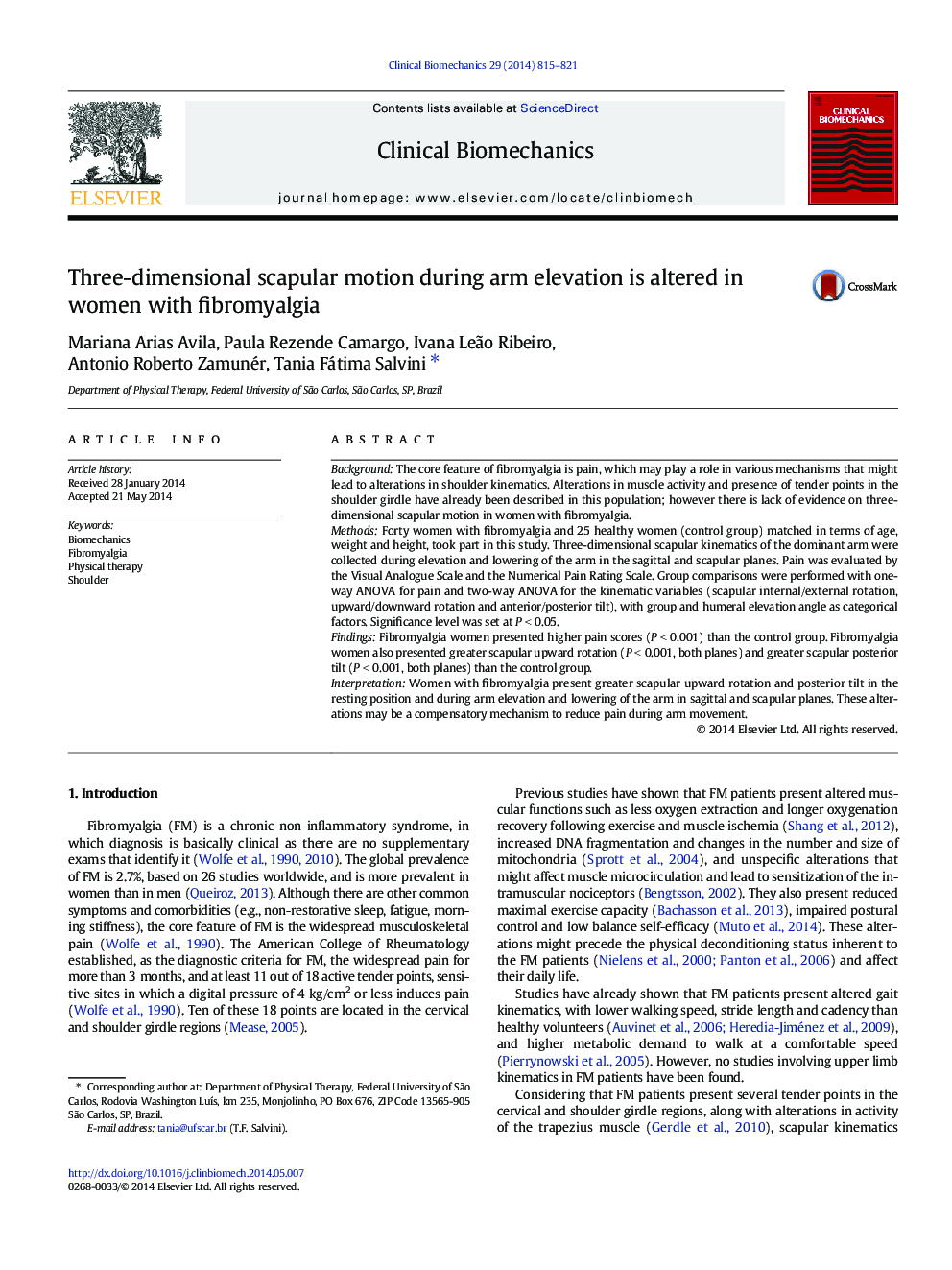| Article ID | Journal | Published Year | Pages | File Type |
|---|---|---|---|---|
| 6204896 | Clinical Biomechanics | 2014 | 7 Pages |
â¢Women with fibromyalgia present altered scapular resting position.â¢Women with fibromyalgia present altered scapular motion during arm elevation.â¢These alterations may be a compensatory mechanism to reduce pain during arm movement.
BackgroundThe core feature of fibromyalgia is pain, which may play a role in various mechanisms that might lead to alterations in shoulder kinematics. Alterations in muscle activity and presence of tender points in the shoulder girdle have already been described in this population; however there is lack of evidence on three-dimensional scapular motion in women with fibromyalgia.MethodsForty women with fibromyalgia and 25 healthy women (control group) matched in terms of age, weight and height, took part in this study. Three-dimensional scapular kinematics of the dominant arm were collected during elevation and lowering of the arm in the sagittal and scapular planes. Pain was evaluated by the Visual Analogue Scale and the Numerical Pain Rating Scale. Group comparisons were performed with one-way ANOVA for pain and two-way ANOVA for the kinematic variables (scapular internal/external rotation, upward/downward rotation and anterior/posterior tilt), with group and humeral elevation angle as categorical factors. Significance level was set at PÂ <Â 0.05.FindingsFibromyalgia women presented higher pain scores (PÂ <Â 0.001) than the control group. Fibromyalgia women also presented greater scapular upward rotation (PÂ <Â 0.001, both planes) and greater scapular posterior tilt (PÂ <Â 0.001, both planes) than the control group.InterpretationWomen with fibromyalgia present greater scapular upward rotation and posterior tilt in the resting position and during arm elevation and lowering of the arm in sagittal and scapular planes. These alterations may be a compensatory mechanism to reduce pain during arm movement.
